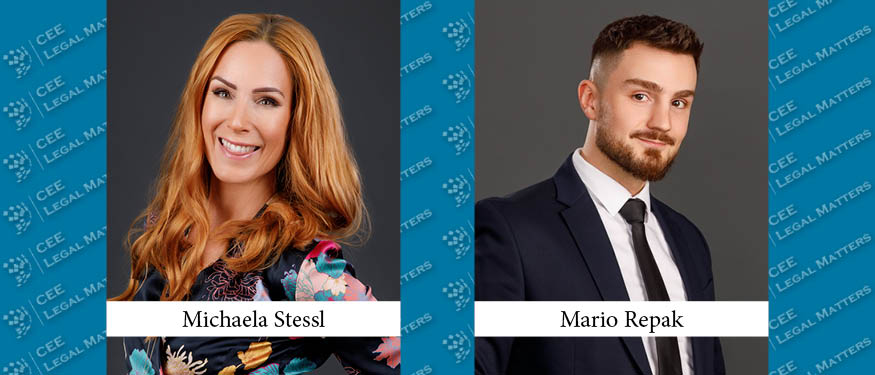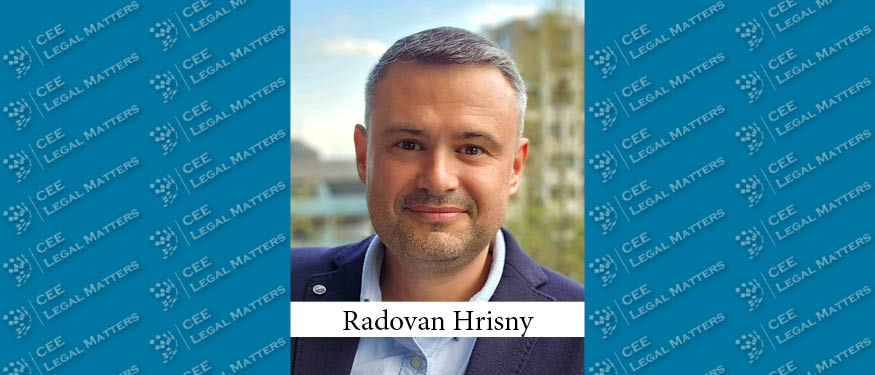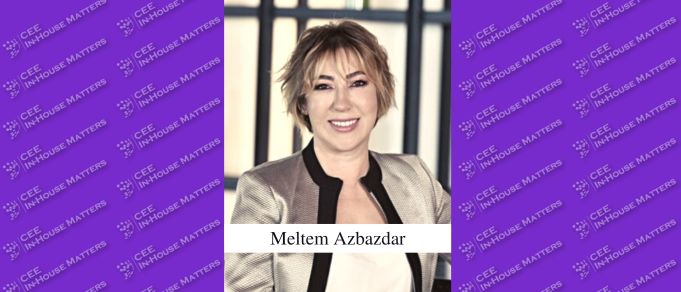If one is an example, two is a coincidence, and three is a trend, the three major law firm mergers in Ukraine this past summer demand closer scrutiny.
On July 9, 2018, the CEE Legal Matters website reported the merger of the Avellum and A.G.A. Partners law firms in Ukraine. A month later, the website reported on a second merger, this time between Asters and EPAP, the Ukrainian office of Russia’s Egorov Puginsky Afanasiev & Partners. And in September the website reported on yet another merger, between Integrites and Pravochyn. To explore these significant changes in the market, on October 26, 2018, CEE Legal Matters sat down with a collection of prominent Ukrainian lawyers — including several from firms directly involved in the summer’s mergers — at the Kyiv office of DLA Piper.
Round Table Participants:
- Margarita Karpenko - Partner - DLA Piper (Host)
- Bertrand Barrier - Partner - Jeantet
- Markiyan Kliuchkovskyi - Partner - Asters
- Mykola Stetsenko - Partner - Avellum
- Oleksandra Malichenko - Head of Legal
- Vladimir Sayenko - Partner - Sayenko Kharenko
A Sign of Maturity
DLA Piper Partner Margarita Karpenko – the event’s host – kicked off the discussion by describing the three mergers as a sign of a maturing market, and suggested that they reflected an increasing level of institutionalization among law firms. Sayenko Kharenko Partner Vladimir Sayenko agreed with Karpenko’s analysis, reporting that “while we see such mergers often in other jurisdictions, in Ukraine it’s still a relatively rare thing,” and is “a sign that the current market place is becoming more mature.” Jeantet Partner Bertrand Barrier also described the recent developments as a “good sign,” noting that “what is currently happening contrasts with what we’ve become used to seeing in the last few years: the departure of a good number of international law firms.”
Most agreed that changing client expectations is driving the trend. Karpenko suggested that the mergers are “a sign of clients becoming more sophisticated in their demands, expecting a more rounded offering. As a result, in cases where firms were missing a capability, such as arbitration, for example, a merger was a natural route to explore.” Asters Partner Markiyan Kliuchkovski nodded in agreement, explaining that his firm’s merger with EPAP was purely the result of a drive to expand its service offering to clients.
Oleksandra Malichenko, the Head of Legal at a TMT company in Ukraine, explained that clients like her are increasingly favoring larger firms with a varied set of covered practices. “You cannot know all the work you’ll need in advance,” she said, in explaining her preference for one-stop shops. “One day it’s this practice and another it’s a different one.”
And the merger trend might be a necessary corrective in the Ukrainian market in particular. Avellum Partner Mykola Stetesenko explained that he’s been “a proponent of mergers for many years,” as he felt the market was too dispersed. Stetsenko said that, in his opinion, the over-saturated nature of the market is problematic for clients, as competition drives the quality of service down along with prices. “We’ve heard of law firms offering to do capital markets work for free simply to get their foot in the door,” he reported. “Luckily many clients don’t bite when it comes to this approach since they know that when you pay nothing, or close to nothing, you simply get bad service.” Karpenko nodded in recognition of the phenomenon Stetsenko described.
Not all agreed that the market needed consolidation, however. Bertrand Barrier pointed out that, at least as far as international firms are concerned, there are not so many actors left in Ukraine, so in his opinion over-saturation is not a problem.
According to Vladimir Sayenko, “the legal services market in Ukraine is highly competitive and liberally regulated. It is influenced by the poor state of the economy and low demand for high quality legal services. Thus, in my view, the current structure of the market is actually very balanced to satisfy the demand from clients.” Still, he conceded, when the Ukrainian market itself grows, more mergers will be likely. “As the economy grows and as the market for legal services becomes more mature, we will see some consolidation.”
In any event, Stetsenko insisted, the large number of firms on the market means that, at the very least, legal talent is highly dispersed. He explained that Ukrainian legislation is becoming more and more complicated, creating “a need to concentrate talent at the moment, and that’s hard when you have over 100 law firms.”
Are Mergers the Way to Go?
While acknowledging that clients are increasing their demands, Sayenko said that his firm, at least, isn’t considering a merger at the moment. “Frankly I wouldn’t do one unless there is no other way to acquire a particular expertise,” he said. “For me, the benefits are more difficult to achieve, and the risks are more obvious.” He offered an analogy: “My grandmother used to go to the market to buy apples — she’d look at each apple and only pick the ones she felt looked good. She’d of course then bargain for each one and get a good deal as she could decide what she wanted to do with each. Today we go to a mega store, bulk-buy a box and bring it home, and only then go through each one: this one is good and edible, this one looks a bit less so and will end up in a pie, and some are simply rotten and you need to throw them away.” A similar problem arises in the context of law firm mergers, he said. “It’s a big job to integrate an entire team if you take it as one on the wholesale market.”
Barrier, whose own firm underwent the process several years ago, agreed that mergers are not necessarily as easy as they may seem at first glance. Kliuchkovskyi, while insisting that the Asters/EPAP firm was a success, acknowledged that the merger process required a “long and complicated effort and … long discussions before the announcement and long integrations after it.”
Because of this difficulty, Barrier expressed the same preference as Sayenko towards filling potential offering gaps organically rather than through merger. And again, while Sayenko agreed that the pressure to add capabilities was acute — he cited Sayenko Kharenko’s November 2018 hiring of new Tax Partner Svitlana Musienko as an example of the firm’s response — he didn’t see any “pending structural changes in the legal services market that would lead to any objective justification for considerable further consolidation in the market.”
A Rose by Any Other Name
Vladimir Sayenko expressed skepticism about whether most law firm combinations really qualify as actual mergers to begin with. “Law firms prefer to talk about mergers,” he said, “but in reality there is no merger of legal entities. Usually these quasi-mergers are actually structured as a larger firm hiring the team of a smaller firm. If all people move, the smaller firm is then liquidated. But some partners, with their teams, may continue to operate independently. I am not sure I see how that is different from any other lateral team moves.” He pointed to one of the three major combinations this past summer. “In the case of EPAP, the team that moved is large, and that creates some peculiarities, but it does not make it a merger. Especially because part of the team did not move and continues to operate in the old firm under the old brand.”
As a result, Sayenko said, he was “surprised to see that the parties decided to seek merger clearance from the Antimonopoly Committee of Ukraine for this lateral move of lawyers – but if it creates a good PR effect, then why not, I guess?”
Markiyan Kliuchkovskyi, at Asters, joked that it would have been useful to hear that point made before the merger, but then, turning serious, explained that the analysis conducted by Asters before joining up with EPAP suggested that their tie-up passed the relevant threshold, and that they wanted to respect both the spirit and the letter of the law. Besides, he said, “ultimately it doesn’t matter what you call it; the challenge comes down to the fusion of two large teams and the practicalities are what you were more preoccupied with, along with ensuring uninterrupted client service.”
But whether these combinations count as “mergers” is also related to what the decision by one of the parties to discard its brand and operate going forward under the existing brand of the other means. Kliuchkovskyi insisted that “the brand name does not necessarily have to reflect the terms of the merger,” though he conceded that, “of course, everyone feels differently about the name on the door.” He pointed out that both parties to the Asters/EPAP merger had agreed to move away from the concept of named partners, making the merger less difficult. “In our case, it was based on the parity of the firms — both teams worked together and saw this as a merger of equals,” he insisted, explaining that the teams had similar ages, experiences, and growth record.
Mykola Stetsenko’s agreed that the name on the door was not always tied to whether the merging parties were “equal” or not, insisting that “the concept of mergers of equals comes down to how the roles and rights are allocated among partners from both firms and, in that regard, yes, the Avellum and AGA Partners merger is a merger of equals.” Ultimately, he said, “as to the rationale of the choice of the name, we took a very pragmatic approach to this and looked at brand awareness and popularity. By merging names, you need to realize you need to invest substantially in changing everything in the branding materials.”
Making It Work
Regardless of what you call a combination of law firms, Kliuchkovskyi insisted, there are two factors that make it work: “First of all is the business case, and second is simple chemistry,” he said. “If you don’t have both, the combination simply does not make sense.” Paying attention to both, therefore, is critical, even early on. “Ultimately, it is a matter of both sides seeing it as mutually beneficial and there is some added value — a typical ‘one plus one equals three’ rationale.’”
And, he said, from his experience, wasting too much time on preliminary theorizing and analysis constitutes virtual navel-gazing. “We can talk all day about common philosophies and values,” he said, “but integration comes down to practical aspects such as common processes, business approaches, policies, and so on, and there is a lot of work to align it all to act as a single business unit and there is no other way to do it but to go through it step by step and try to come up with ways that work for everyone.” He added: “It comes down to trust and openness to say ‘look, how you’ve been doing it is not how we’ve been doing it, but let’s look at it together,’ and give it all proper consideration and discuss as real partners. At the end of the day it is all about compromises and following common business sense.”
How Are Clients Affected?
Of course, the question of how clients are affected is critical as well. Oleksandra Malichenko claimed that it is impossible to keep clients from noticing any disruptions while a merger is being ironed out – and that it is important to remember that clients cannot always move for continuances in matters with fast-approaching deadlines and that they need to be reassured that they have back-up options at their disposal.
In response to a question about potential conflicts of interest, Mykola Stetsenko said that, ideally, this is a topic addressed early on in the merger process. In his opinion, he said, “I think all of us need to start treating conflicts of interest more seriously. I originated from an international law firm environment where I saw very sophisticated systems of conflict checks — some firms even have a dedicated person to cover them. Unfortunately, I still see people who treat conflicts very lightly and it is still common to take the approach of ‘if you don’t have a matter-based conflict, then you don’t have a conflict,’ when there are, in fact, far more sophisticated layers of potential conflict. Even our code of ethics for lawyers in Ukraine doesn’t cover this properly.”
And, Stetsenko continued, in the context of firm mergers, “the issue of conflicts is critical: even before our merger we had a close look at our key clients and there were some conflicts, or just clients that come from one team or another that preclude the other team from exploring other business opportunities. That’s normal but that’s why we had a detailed Partner meeting devoted to the issue of conflicts.”
Oleksandra Malichenko took a step back, though, and wrapped up the conflicts of interest discussion by noting that she’d “like to believe our NDA is valid beyond what the letterhead says in any case.”
Logistics
Of course, other challenges arise during the merger process as well. For instance, Kliuchkovskyi said, finding necessary office space can problematic. “It is not that easy in Kyiv to find a place that can accommodate the needs of a firm of our size,” he said, “that has further plans to grow, and that is adequately priced.” He added that in the Asters/EPAP case the firms were lucky, “because the two offices are relatively close together and people can move between the two with some ease.” Still, he said, “hopefully we’ll consolidate physically soon, as well as organizationally.”
Stetsenko pointed to another element which, he admitted, “came as a slight surprise.” According to him, “prior to the merger we were a three-partner law firm, and then we grew to a six-partner one. In the past we could have ad hoc partner meetings over lunch. I soon realized I was returning to the large law firm days and the challenges I saw then: scheduling partner meetings and having an agenda for the meeting — if you don’t have one you have discussions just about everything. It wasn’t a huge surprise, but it was a funny thing to have more bureaucracy like that.”
And the increased size of a firm, after merging/integrating with another, can bring other challenges as well. “We are reasonable in our understanding that size is a benefit,” Kliuchkovskyi said, “but it can also pose difficulties. It’s like a car – a very large truck might feel comfortable, but it can sometimes be difficult to maneuver. On the one hand, we have the man-power, we have the expertise, but there are of course difficulties stemming from different skill sets, personalities, and ambitions, and all of that takes effort to align.”
Looking Towards the Horizon
Ultimately, most agreed that the mergers of summer 2018 were a positive sign for the market. Bertrand Barrier said that he expects to see a considerable amount of movement in the market in the near or mid-future, either in the form of mergers or large lateral hires, and Margarita Karpenko noted that she expects to see further institutionalization of law firms in the country and a continuing maturation of the market.
On that optimistic note the conversation drew to a close.
* CEE Legal Matters thanks Margarita Karpenko and DLA Piper for hosting the gathering.
This Article was originally published in Issue 5.11 of the CEE Legal Matters Magazine. If you would like to receive a hard copy of the magazine, you can subscribe here.
















